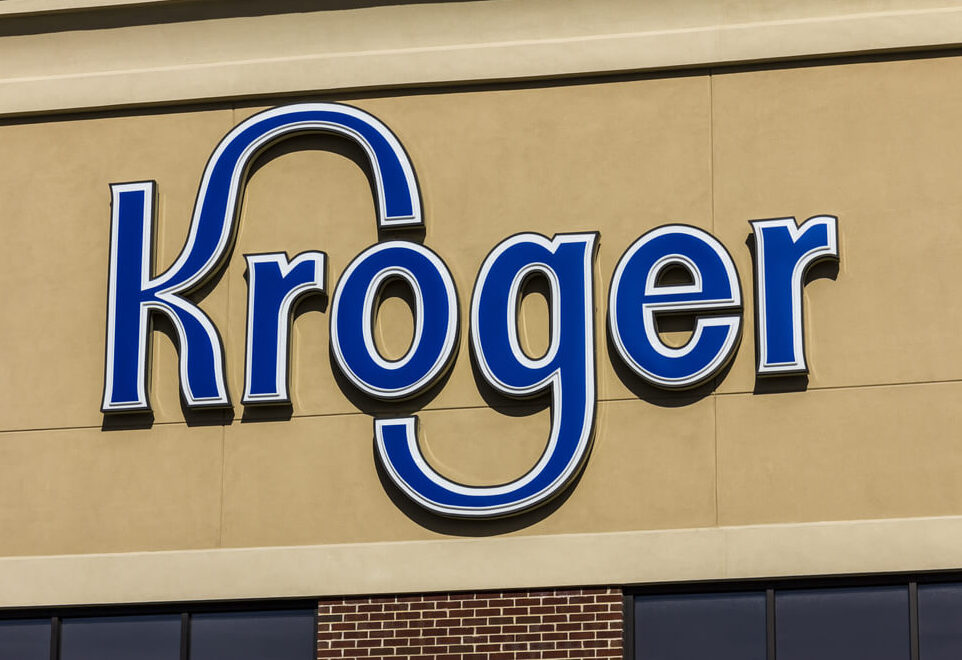Kroger’s stock rating proves it has been a year of unexpected winners.
While the big tech names garner the most attention from investors, boring companies in basic industries have also enjoyed a fantastic run. Even in a pandemic, people have to eat.
That brings us to grocery store chain Kroger Co. (NYSE: KR), the largest publicly-traded grocer with over 2,700 locations spread across the United States. Shares are up a respectable 13% year-to-date, and this is after the stock has drifted lower in the past two months.
The pandemic has been a boon for online retailers like Amazon.com Inc. (Nasdaq: AMZN). But Kroger is no slouch when it comes to technology. And Kroger’s stock rating proves that.
Kroger’s digital sales grew 127% in the second quarter compared to the same quarter in 2019. Kroger was not content to roll over and let Amazon take over the world, emerging as a leader in curbside pickup among traditional grocers.
I expect that life will get closer to normal throughout the remainder of this year and the first half of 2021. Hopefully, by next summer, this will all be a distant memory.
But the innovations put in place during the pandemic will still be with us long after. Once customers get used to curbside delivery, they’re not going to want to stand in line and fight crowds in the store. This benefits the early adopters like Kroger.
Let’s see what that could mean for Kroger’s stock rating using our Green Zone Ratings system.
Kroger’s Stock Rating
For a stodgy old grocer, Kroger rates exceptionally well at 86. Let’s drill down to see what factors are driving that rating.
Kroger’s Green Zone Rating on October 23, 2020.
Value — Kroger rates as a 98 in value, meaning that it’s cheaper than all but 2% of stocks in our universe. The stock trades for just 9.9 times trailing earnings and 0.20 times sales. As a point of reference, Walmart trades for 23 times earnings and 0.76 times sales. Walmart is a larger and more diverse retailer, of course, and should trade at a healthy premium. But all the same, Kroger is awfully cheap by comparison.
Volatility — At 98, Kroger rates equally high based on volatility. Remember, the higher the score here, the lower the stock’s volatility. So this stock is nice and steady.
Quality — Kroger also rates highly in quality with a rating of 77. Quality is mostly a function of profitability and debt management in our model. While the grocery business tends to have relatively low margins, it’s worth noting that Kroger sports a very healthy return on equity of 27%.
Momentum — Kroger has drifted lower over the past two months, but it still rates respectably high in momentum at 66. Kroger has enjoyed a good run in 2020, and the shares have been trending higher since mid-2019.
Growth — Kroger’s stock sports a middle-of-the-pack rating in growth at 58. This is a grocery store, not a trendy social media company. All the same, the pandemic has people eating at home more, and Kroger enjoyed same-store sales growth of 14.6% in the second quarter. And as I mentioned before, its digital business soared 127% in that same timeframe.
Size — If Kroger has a weakness, it would be its size. Historically, larger stocks have underperformed their smaller rivals. Kroger has a $25 billion market cap and rates as a 3 based on size.
Bottom line: Kroger isn’t the sort of stock that is likely to double your money in a year. Again, this is grocer! But based on our rating system, we would expect Kroger to outperform the market by a healthy margin in the year ahead. Kroger’s stock rating shows it’s a solid choice for your portfolio.
Money & Markets contributor Charles Sizemore specializes in income and retirement topics. Charles is a regular on The Bull & The Bear podcast. He is also a frequent guest on CNBC, Bloomberg and Fox Business.
Follow Charles on Twitter @CharlesSizemore.
